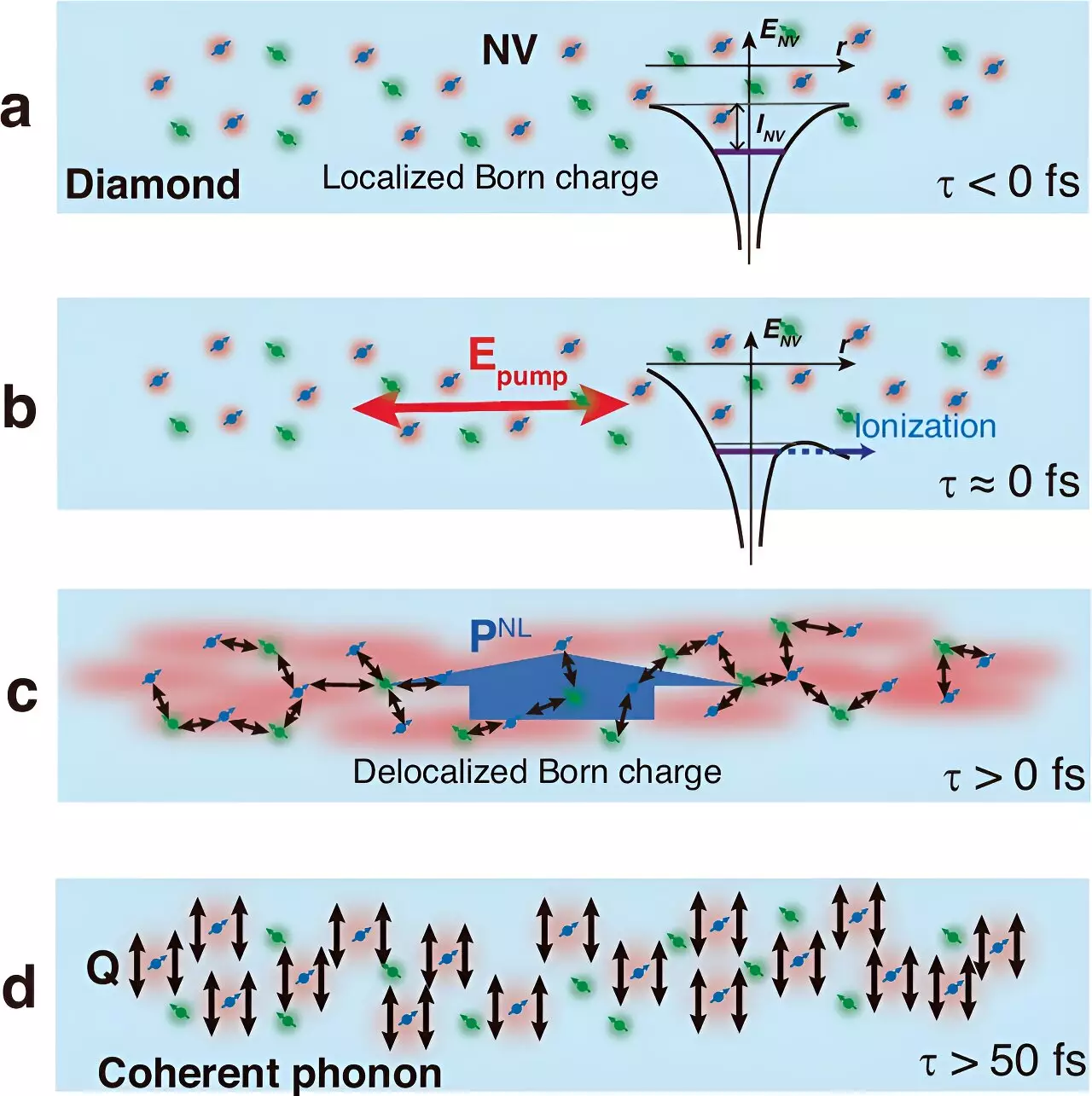Recent advancements in quantum science have shed light on the fascinating interactions between light, electrons, and crystal structures. A remarkable study led by researchers at the University of Tsukuba explores the cooperative behavior of polaron quasiparticles formed through the interactions between electrons and lattice vibrations in diamond crystals, particularly focusing on color centers. The intriguing findings are documented in the prestigious journal Nature Communications and signify a notable step toward innovative applications in quantum sensing technology.
Diamonds are not just celebrated for their beauty; their internal structures reveal remarkable qualities when specific impurities, such as nitrogen (N), are introduced. The incorporation of nitrogen into the crystal lattice can induce the formation of a vacancy adjacent to a carbon atom, resulting in a nitrogen-vacancy (NV) center. These NV centers are critical in the study of quantum phenomena due to their heightened sensitivity to various environmental factors, including magnetic fields and temperature fluctuations. This sensitivity opens avenues for creating highly precise sensors that can operate under standard laboratory conditions.
The core of this study is centered around understanding the interaction mechanism between the electrons coursing through these NV centers and the lattice vibrations that arise from distortions in the crystal structure. The research team utilized ultrathin nanosheets embedded with density-controlled NV centers situated near the surfaces of high-purity diamond crystals. Through the application of pulsed laser irradiation, they meticulously analyzed the resultant changes in reflectance, providing valuable insights into the dynamics of lattice vibrations within the diamond matrix.
The results were illuminating; the amplitude of lattice vibrations demonstrated an impressive increase—approximately 13 times greater than expected, despite the relatively low density of NV centers. This amplification underscores the significance of polaron quasiparticles, which consist of free carriers enveloped by a phonon cloud. Such findings not only challenge the long-standing notions regarding the nature of polarons in diamonds but also underscore a potential new mechanism for enhancing sensor technologies.
In their quest for deeper understanding, the researchers executed first-principles calculations. These analyses revealed intriguing insights regarding the charge distribution within the NV centers, showing a biased mix of positive and negative charges. The investigation suggested that the emergence of Fröhlich polarons, a concept originally postulated nearly 70 years ago, might indeed manifest within diamond structures—specifically arising from the NV centers present in the nanosheets utilized in this study.
These groundbreaking findings not only enhance the theoretical landscape surrounding polaron quasiparticles in diamond but also unveil new dimensions for their practical applications. Quantum sensing, which leverages the exceptional capabilities of NV centers, could potentially evolve, leading to the development of sensors with unprecedented sensitivity and spatial resolution. The exploration of polarons within this context positions researchers closer to realizing next-generation technological frameworks that could revolutionize various fields, from geology to medicine.
The collaborative efforts of researchers at the University of Tsukuba signify a transformative milestone in our understanding of polaron quasiparticles in diamonds, promising exciting possibilities ahead.


Leave a Reply